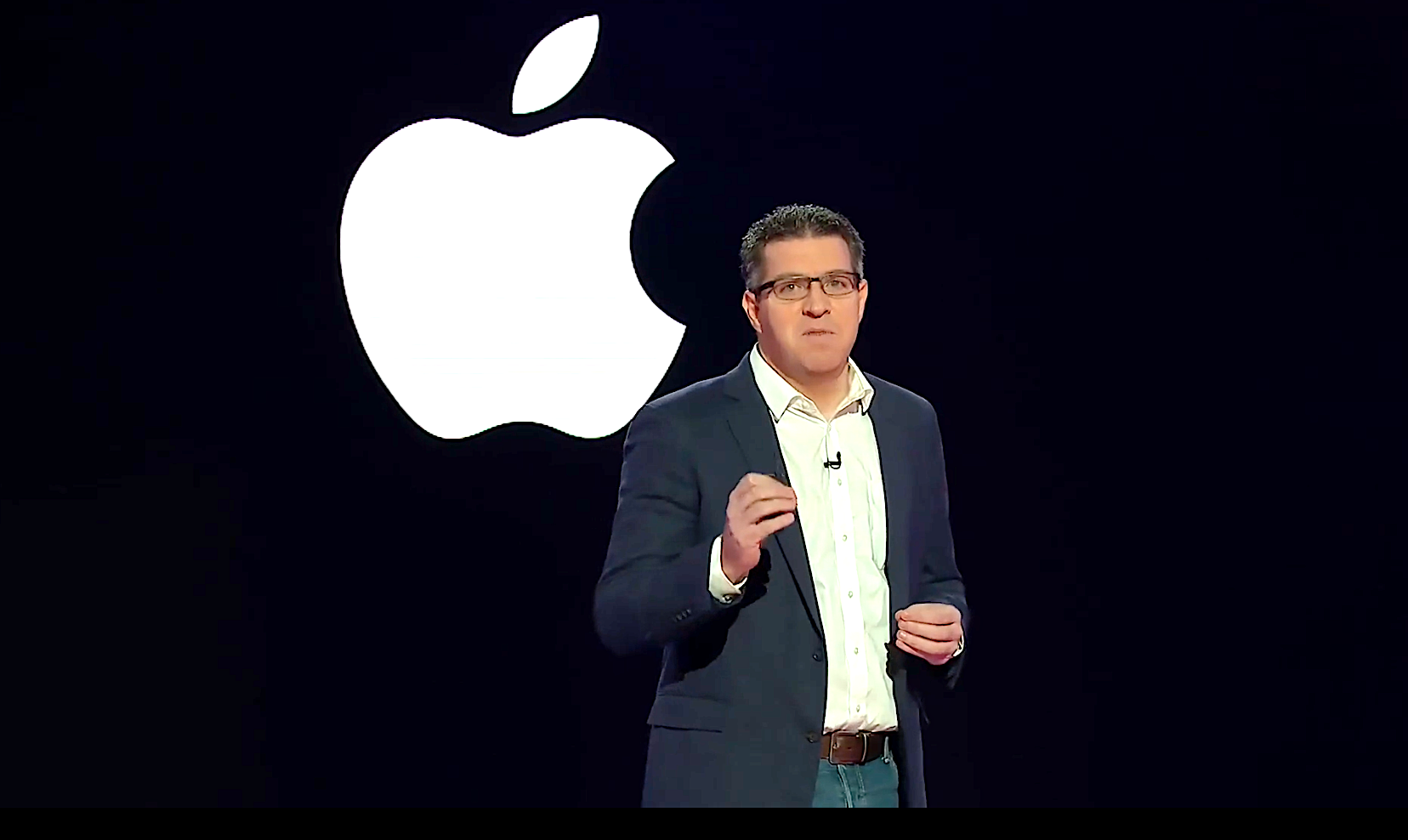 CLOUD
CLOUD
 CLOUD
CLOUD
 CLOUD
CLOUD
Amazon Web Services Inc. late Monday night introduced what it says are the first natively run, cloud-based macOS instances on its Amazon Elastic Compute Cloud platform.
The new macOS instances were announced during the opening night of AWS re:Invent 2020 virtual event by Amazon EC2 Vice President Dave Brown (pictured), and they give Apple developers a way to run on-demand macOS workloads in the cloud.
It’s a big deal, because it means Apple developers can provision and access a macOS environment on Amazon’s cloud in seconds and start developing software for the iPhone, iPad, Mac, Apple Watch, Apple TV or the Safari browser without needing to invest in any specific hardware or software.
Amazon said the macOS instances are built on Mac mini computers that are powered by the latest 8th generation six-core Intel Core i7 processors, with 32 gibibytes of memory, plus the AWS Nitro System that provides up to 10 gigabits per second of VPC network bandwidth and 8 Gbps of Elastic Block Store storage bandwidth through high-speed Thunderbolt 3 connections. Notably, the instances can access many of Amazon’s cloud services too, including Amazon Simple Storage Service, Amazon Elastic Block Store, Amazon Elastic File System, Amazon Fsx for Windows File Server and more.
Amazon said the instances are enabled by the AWS Nitro System, which makes it possible to offer Mac minis as fully integrated and managed compute instances, just like any other Amazon EC2 instance.
Brown said in a Q&A session with reporters that the instances were created in response to demand from developers, and that Amazon had been working with Apple for around a year to develop and perfect the service. He said he expects that because of the massive demand Amazon has seen, the instances will be able to serve a very large ecosystem.
For the average developer, Brown said the most obvious benefit is being able to scale their workloads to previously unprecedented heights. “They don’t have access to the scale that this provides,” he said. “It’s a few clicks and a credit card … to get access to a thousand machines.”
In a blog post, AWS Chief Evangelist Jeff Barr said he expects most Mac instances will be used by developers to build, test, package and sign Xcode applications for Apple platforms.
Developers can access the macOS instances via command line or remote desktop, provision them within minutes and then use them to create build farms, render farms and continuous integration/continuous development farms that tackle all of the above Apple environments, he added.

Developers also have the option of consolidating the development of cross-platform apps that run on Apple, Windows and Android, on the same cloud platform. That will inevitably lead to some big productivity gains, Barr said.
Early adopters have already experimented with the EC2 Mac instances and said, not surprisingly since they’re quoted in AWS’ press release, that they’re impressed with the results. Financial, accounting and tax preparation software company Intuit Inc. migrated its existing iOS and macOS build-and-test pipelines to Amazon’s cloud, for example, and its developers say the move led to a sharp improvement in productivity.
“We‘re experiencing up to 30% better performance over our data center infrastructure, thanks to elastic capacity expansion, and a high availability setup leveraging multiple zones,” said Pratik Wadher, Intuit’s vice president of product development. “We’re now running around 80% of our production builds on EC2 Mac instances.”
Holger Mueller, an analyst with Constellation Research Inc. said the Mac instances show how Amazon is getting its cloud further into the enterprise with more exotic workloads. “It’s another proof point on how successful the Nitro architecture is for AWS, and how quickly it allows it to ramp things up.”
However, Mueller said he expects that Amazon could soon be joined by other cloud vendors in offering Mac instances to their developers, and that the next question is what kinds of services will follow.
“Apple server architectures need the cloud, and Apple will likely be more than happy to deliver Mac minis to all of the cloud vendors,” he said. “Meanwhile, industry observers will note how ironic it is that Apple, which is chasing a more service revenue-oriented future, has lost sight of some of its immediate customer needs with large Apple workloads in their data centers.”
Another analyst, however, is hoping Amazon can do better. “I think this is a strong move for developers in the Apple world, but I would have been even more impressed had it announced M1 processor support,” said Moor Insights & Strategy President and Principal Analyst Patrick Moorhead. “I’m sure this is coming later, but developers need extended availability for the new M1-based macOS projects right now.”
Amazon said the EC2 Mac instances are available in preview now in the US East (N. Virginia), US East (Ohio), US West (Oregon), Europe (Ireland) and Asia Pacific (Singapore) regions, and will come to additional regions soon.
Users can choose between paying for the instances on-demand or going with a savings plan if they intend to use them regularly.
Support our mission to keep content open and free by engaging with theCUBE community. Join theCUBE’s Alumni Trust Network, where technology leaders connect, share intelligence and create opportunities.
Founded by tech visionaries John Furrier and Dave Vellante, SiliconANGLE Media has built a dynamic ecosystem of industry-leading digital media brands that reach 15+ million elite tech professionals. Our new proprietary theCUBE AI Video Cloud is breaking ground in audience interaction, leveraging theCUBEai.com neural network to help technology companies make data-driven decisions and stay at the forefront of industry conversations.